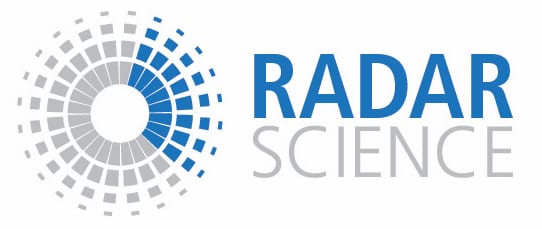Scanning ARM Cloud Radars (SACR) Processing Package
The Scanning ARM Cloud Radars (SACR) processing package is written in both MATLAB (SACRm) and FORTRAN (SACR). The software package uses as input the ingested (netcdf) raw radar files from the SACRs operated by the Atmospheric Radiation Measurements (ARM) program at several fixed and mobile sites. Read SACR’s User Guide for a complete comprehensive understanding of SACR codes.
The software is licensed under GNU LESSER GENERAL PUBLIC LICENSE. If you use the SACR(m) software to process data used in publication, an acknowledgment or reference to the below cited paper would be appreciated.If you have any comments, requests, bug-fixes or features that you would like to have implemented, please contact us.
The SACR(m) codes produce netcdf files for each individual scan after:
- the construction of hydrometeor mask and removal of not significant radar returns
- the attenuation correction for gasses using the nearest-in-time atmospheric sounding
- the correction for the velocity folding that makes use of a first guess for the true Doppler velocity using horizontal wind measurements from the nearest sounding
- the insect removal
- the removal of the second trip echo
To illustrate the input and output of the algorithm, the top left side panel of the figure below shows the input field Signal to Noise Ratio (SNR) as it comes from the ingest file, while the rest five show the different variables (Corrected Reflectivity, Doppler Velocity, unfolded Doppler Velocity, Spectrum Width, and Linear Depolarization Ratio) after running the algorithm.
SACR’s User guide:
sacrm-userguide-v1.1.pdf
Download File
Latest FORTRAN version:
![]()
sacr_v1.1.tar
Download File
Latest MATLAB version:
![]()
sacrm_v1.1.tar
Download File
MATLAB additional codes to plot the processed data
The ARM program recently release the SACRCOR Value added product (VAP) to the evaluation area. You may download corrected SACR data for certain sites here.
sacr_plots.tar
Download File
McGill Radar Doppler Spectra Simulator (MRDSS)
The McGill Radar Doppler Spectra Simulator (MRDSS) uses input from high resolution Large Eddy Simulations (LES) and Cloud Resolving Models (CRMs) and computes forward modeled radar Doppler spectra from profiling radars (Figure). The code is written in MATLAB and uses as input explicit (bin) microphysics. Read MRDSS_User_Guide for a complete comprehensive understanding of the simulator.
The main features of the MRDSS are the following:
- Accounts for gaseous attenuation estimated using Rosenkranz (1998)
- Accounts for liquid scattering and attenuation using Mie (1908)
- Provides output at two vertical resolutions: model and radar (specified)
- The model resolution output assumes uniform beam filling conditions
- The radar resolution output accounts for non-uniform beam filling conditions
- Range of input radar frequencies from 0.1-300 GHz
- Offers a complete radar instrument model (Kollias et al., 2014)
- Estimates the kinematic broadening of the Doppler spectrum using model output
- Includes range-dependent radar receiver noise and signal integration
- Post-processing of the radar Doppler spectrum and moment estimation
Details about the MRDSS package could be found in the MRDSS User Guide. A test LES scene (drizzling stratus), produced by the NASA GISS Distributed Hydrodynamic Aerosol and Radiative Modeling Application (DHARMA) model, has been kindly provided by Dr. Andrew Ackerman (NASA/GISS) to help us demonstrate the features of the simulator. The test scene can be downloaded and should be used only to test the simulator and not to extract conclusions about the numerical model.
The software is licensed under GNU GENERAL PUBLIC LICENSE. If you use the MRDSS software package or its subroutines to simulate LES/CRM model output used in publication, an acknowledgment or reference to Kollias et al., 2014 would be appreciated. If you have any comments, suggestions for improvements, bug fixes or you need help to interface MRDSS with your model output, please contact us.
* Please note that this version MRDSS@1.1 is provided exclusively for liquid phase input from LES model. For ice/snow cases, the code has to be adapted. This issue will be addressed on in the next version
Kollias, Pavlos, Simone Tanelli, Alessandro Battaglia, Aleksandra Tatarevic, 2014: Evaluation of EarthCARE Cloud Profiling Radar Doppler Velocity Measurements in Particle Sedimentation Regimes. J. Atmos. Oceanic Technol., 31, 366–386.
MRDSS User guide:
![]()
mrdss_user_guide.pdf
Download File
Latest version (1.1 delivered 13/11/2015):
![]()
mrdss_v1.1.tar.gz
Download File
Changes/bug fixes implemented on 13/11/2015
File also included in mrdss_v1.1.tar
![]()
changelog.pdf
Download File
Test scene:


